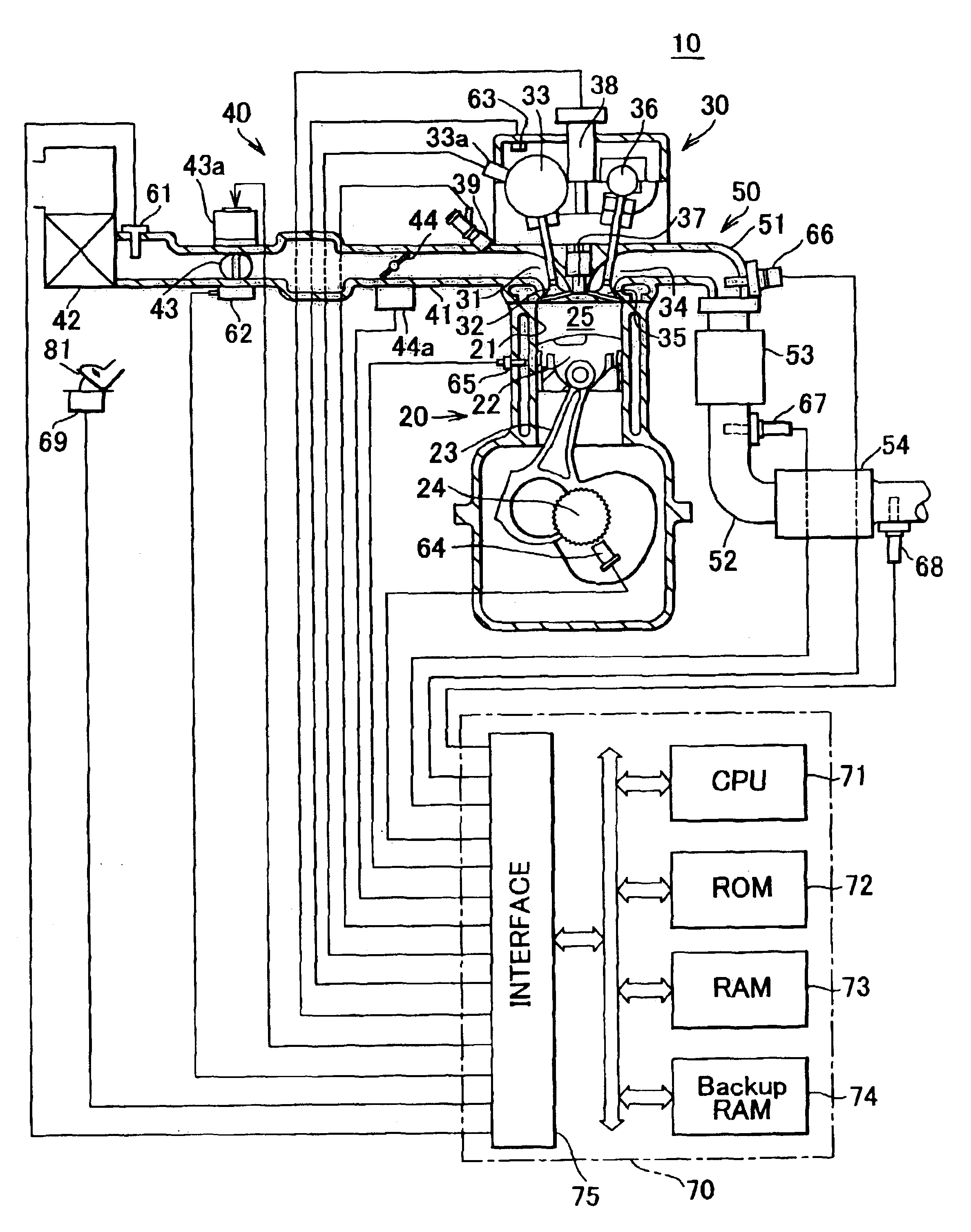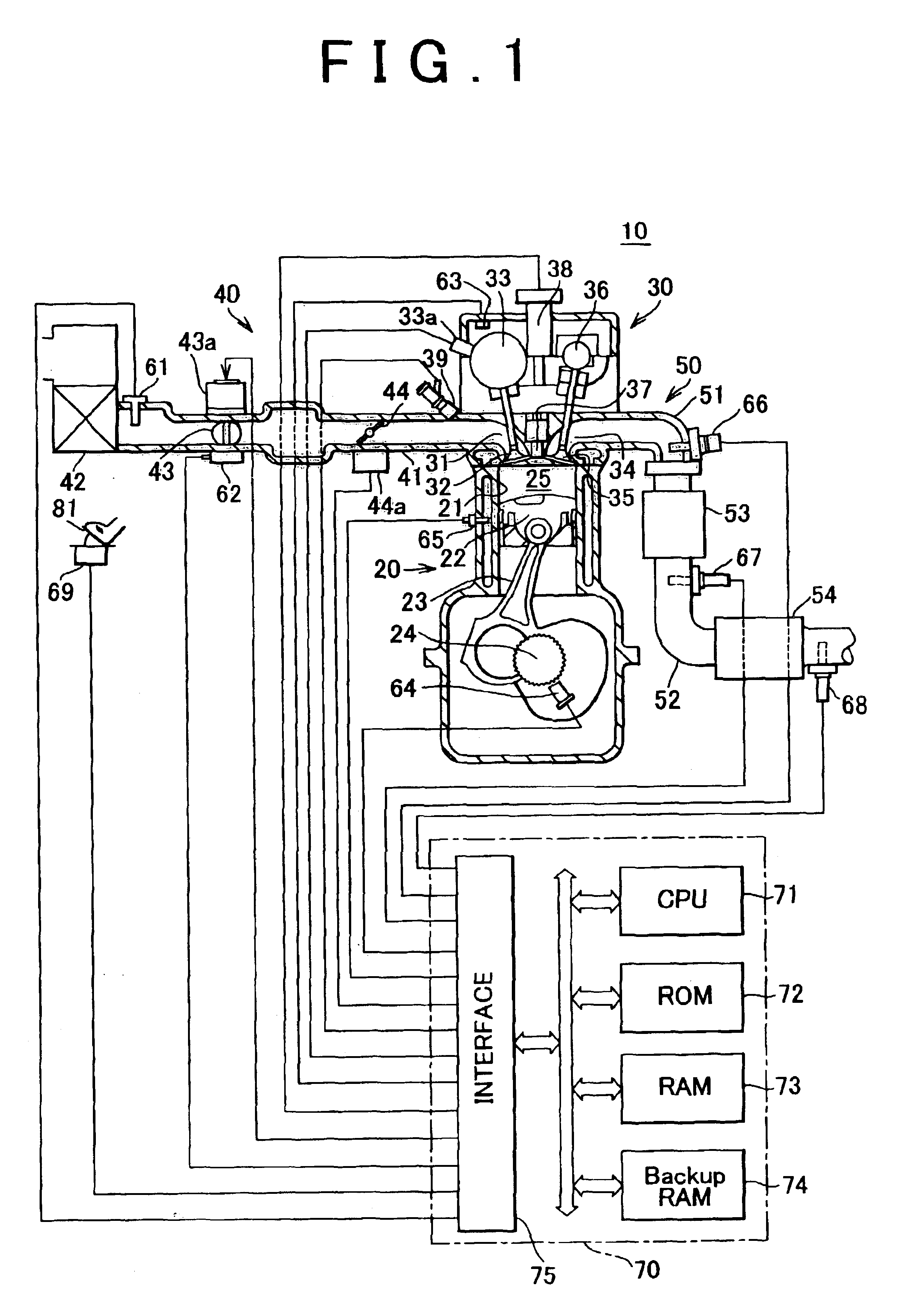Catalyst degradation determining method
a technology of catalytic degradation and determining method, which is applied in the direction of process and machine control, electrical control, instruments, etc., can solve the problems of low efficiency of removing unburned co, low efficiency of hc by the oxidizing function of the catalyst, and the likely emission of nitrogen oxides nox, etc., to achieve the effect of delayed replacement time of the upstream-of-catalytic converter air-fuel ratio sensor
- Summary
- Abstract
- Description
- Claims
- Application Information
AI Technical Summary
Benefits of technology
Problems solved by technology
Method used
Image
Examples
Embodiment Construction
[0072]In the following description and the accompanying drawings, the present invention will be described in more detail with reference to exemplary embodiments.
[0073]FIG. 1 is a schematic illustration of the construction of a system in which an emission control apparatus (catalyst degradation determining apparatus) for carrying out a catalyst degradation determining method in accordance with an embodiment of the invention is applied to a spark ignition type multi-cylinder (e.g., four-cylinder) internal combustion engine 10.
[0074]The internal combustion engine 10 includes a cylinder block section 20 that includes a cylinder block lower case, an oil pan, etc., a cylinder head section 30 fixed to the cylinder block section 20, an intake system 40 for supplying gasoline mixture to the cylinder block section 20, and an exhaust system 50 for releasing exhaust gas from the cylinder block section 20 to the outside.
[0075]The cylinder block section 20 includes cylinders 21, pistons 22, conne...
PUM
 Login to View More
Login to View More Abstract
Description
Claims
Application Information
 Login to View More
Login to View More - R&D
- Intellectual Property
- Life Sciences
- Materials
- Tech Scout
- Unparalleled Data Quality
- Higher Quality Content
- 60% Fewer Hallucinations
Browse by: Latest US Patents, China's latest patents, Technical Efficacy Thesaurus, Application Domain, Technology Topic, Popular Technical Reports.
© 2025 PatSnap. All rights reserved.Legal|Privacy policy|Modern Slavery Act Transparency Statement|Sitemap|About US| Contact US: help@patsnap.com



